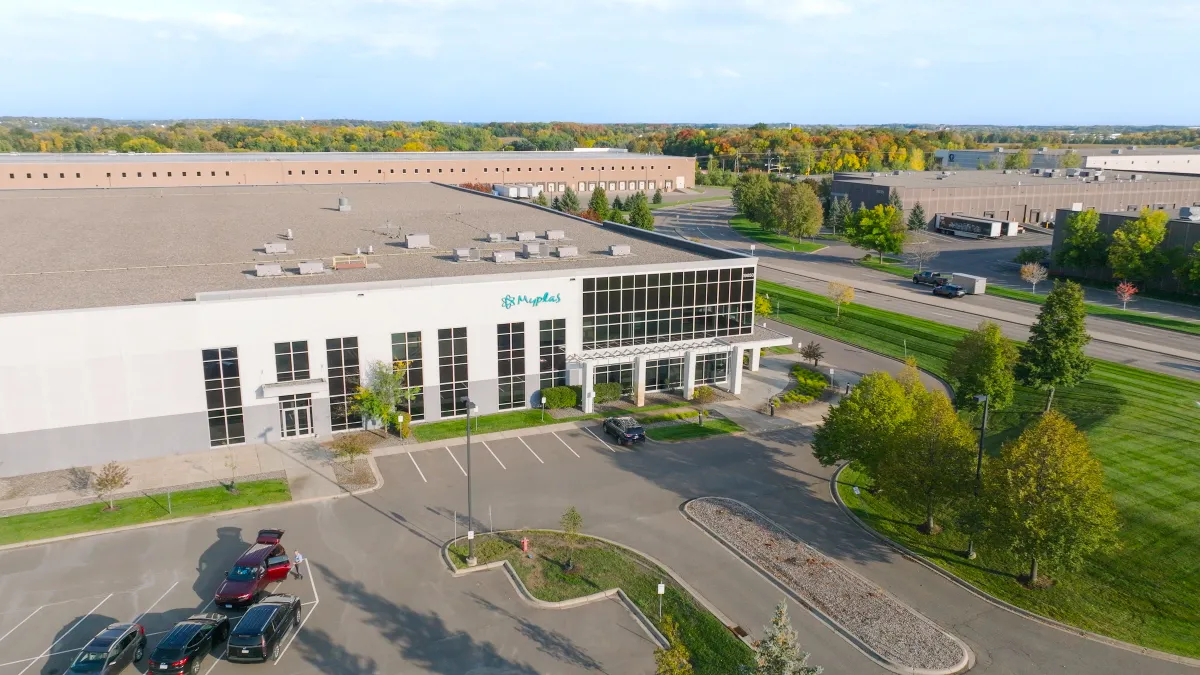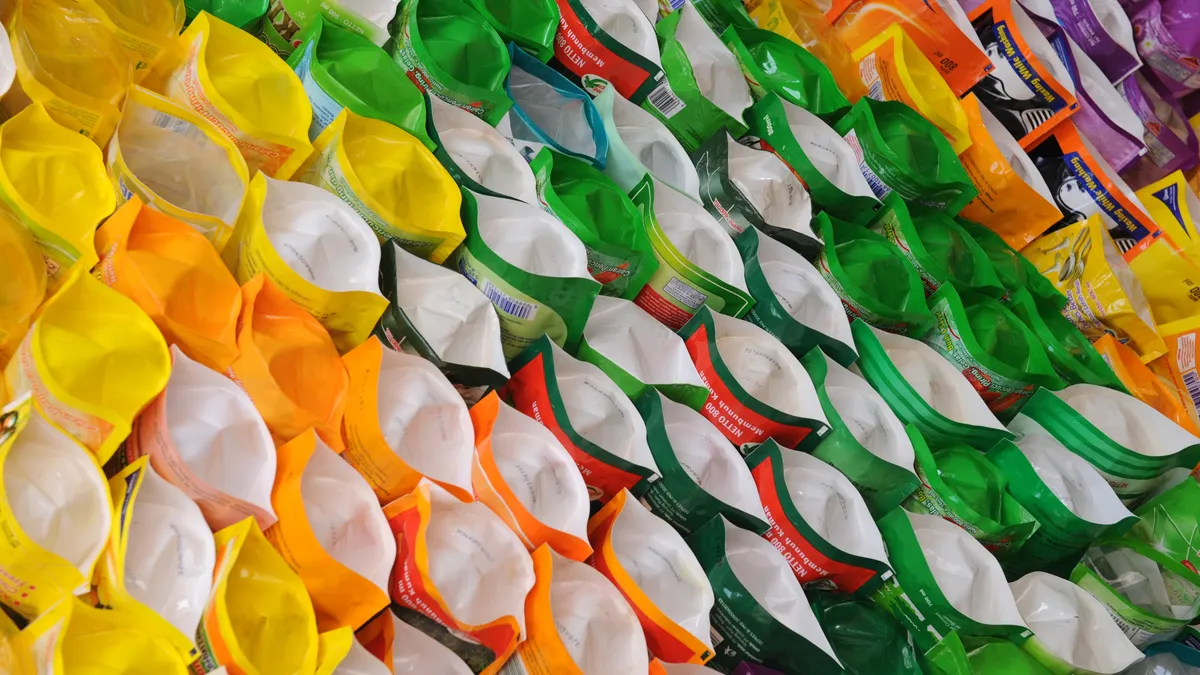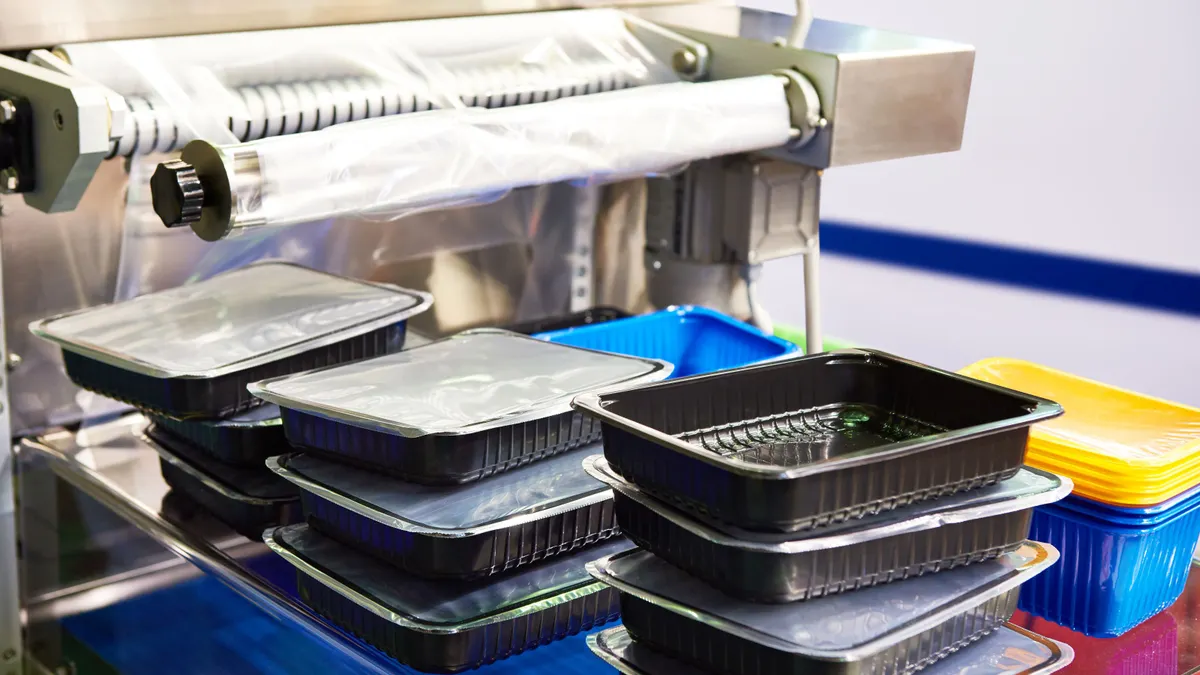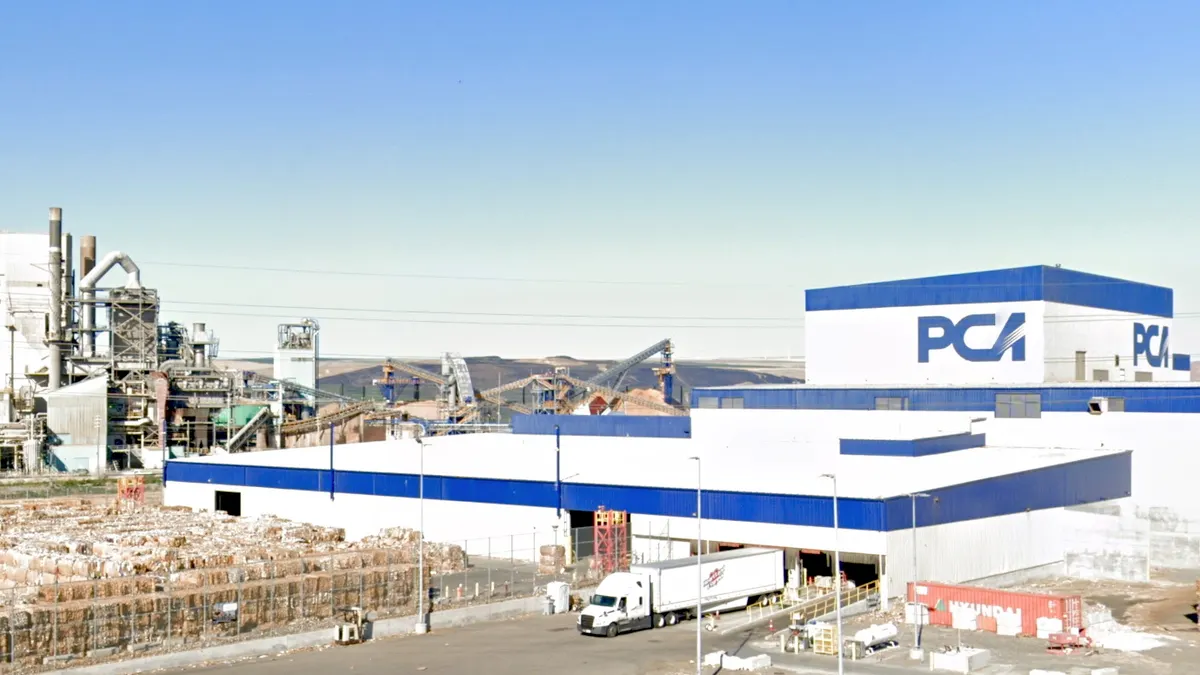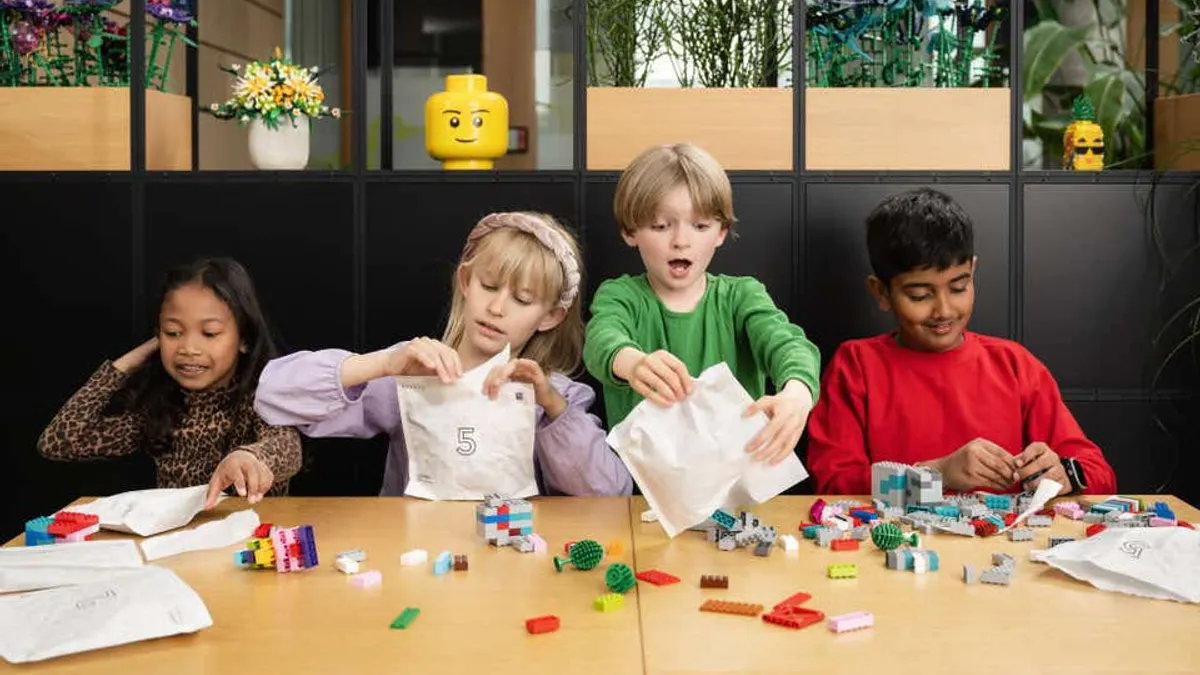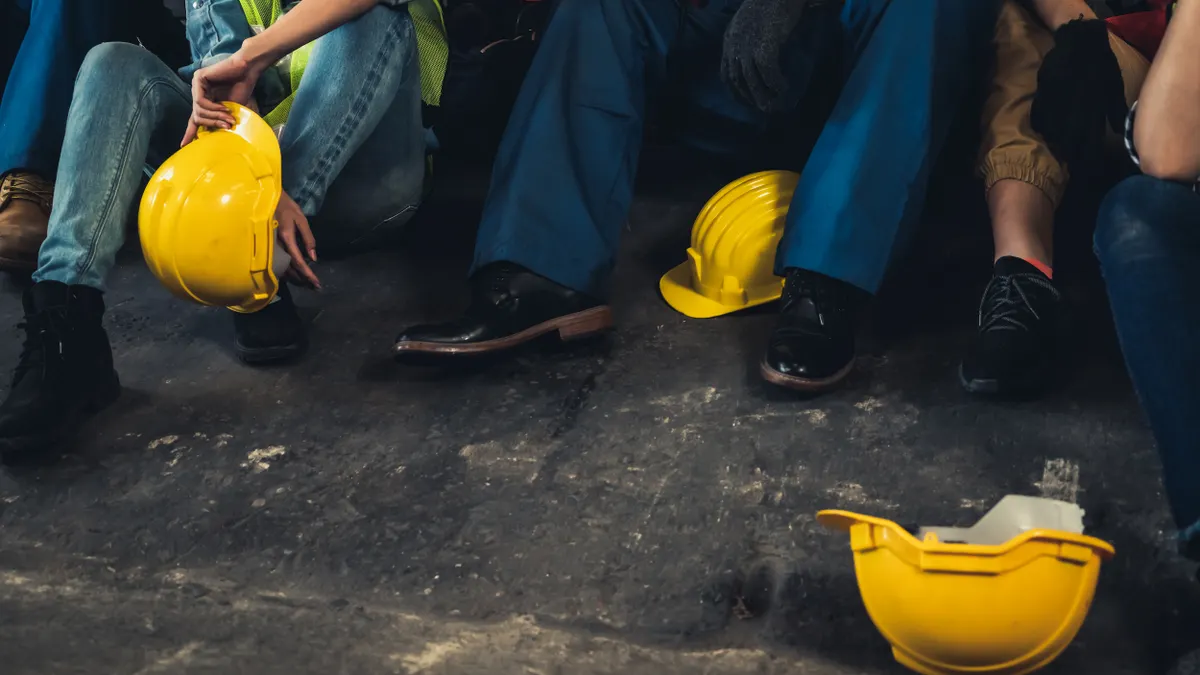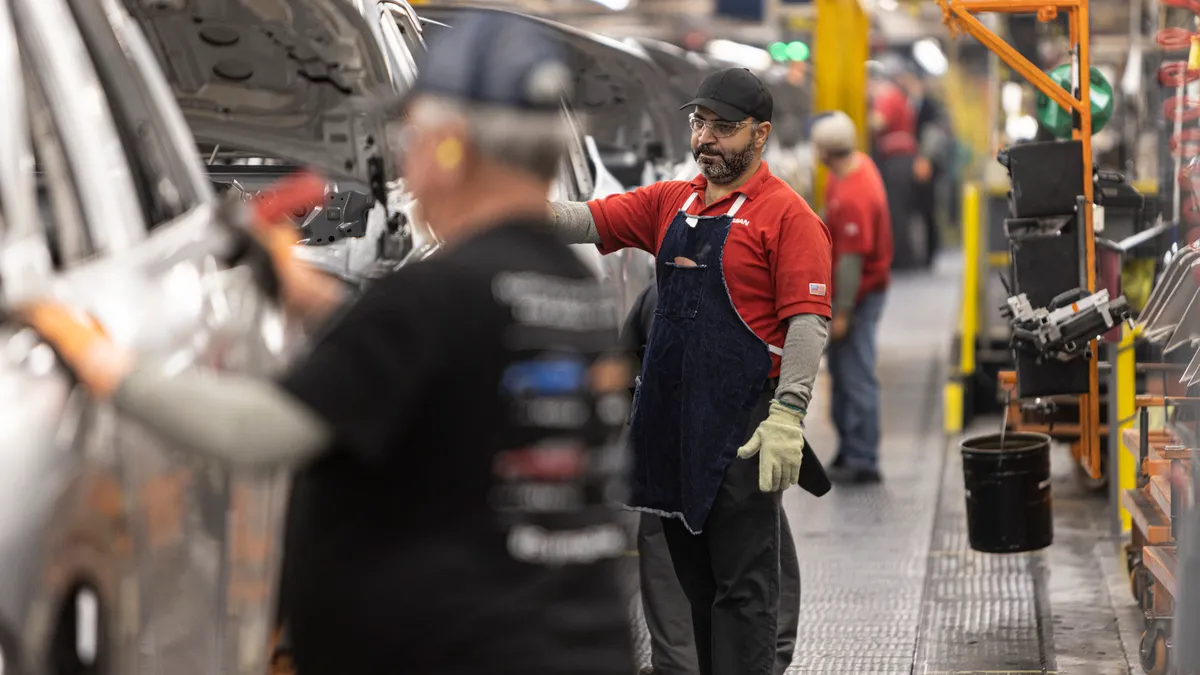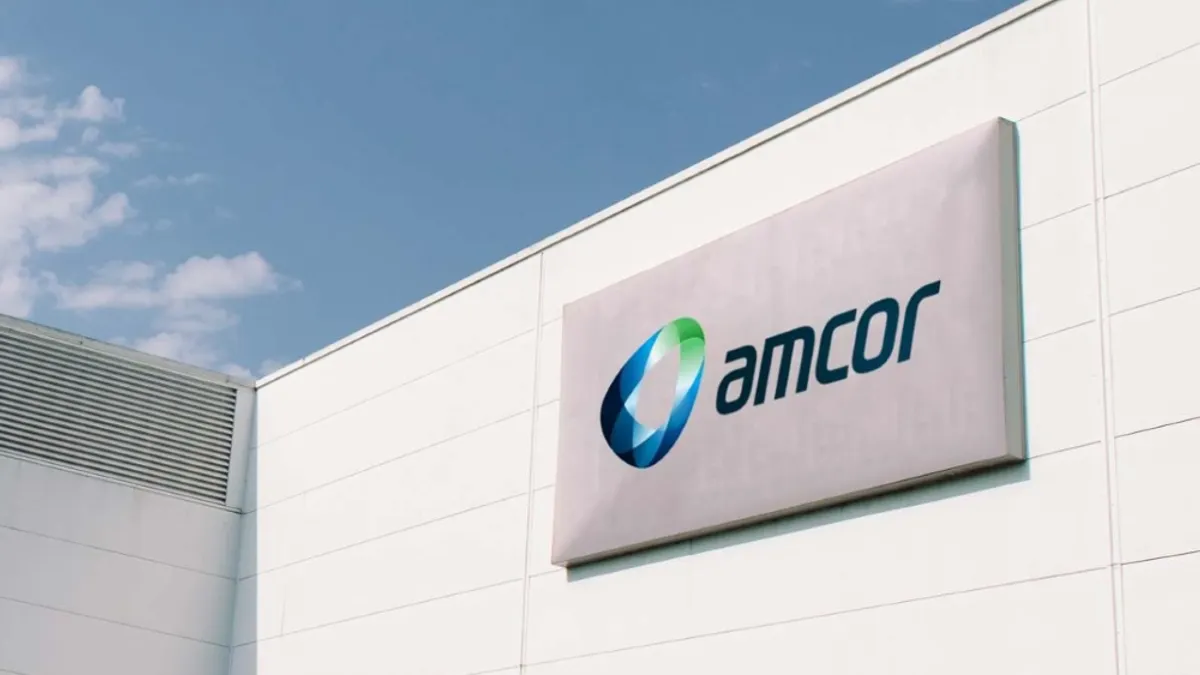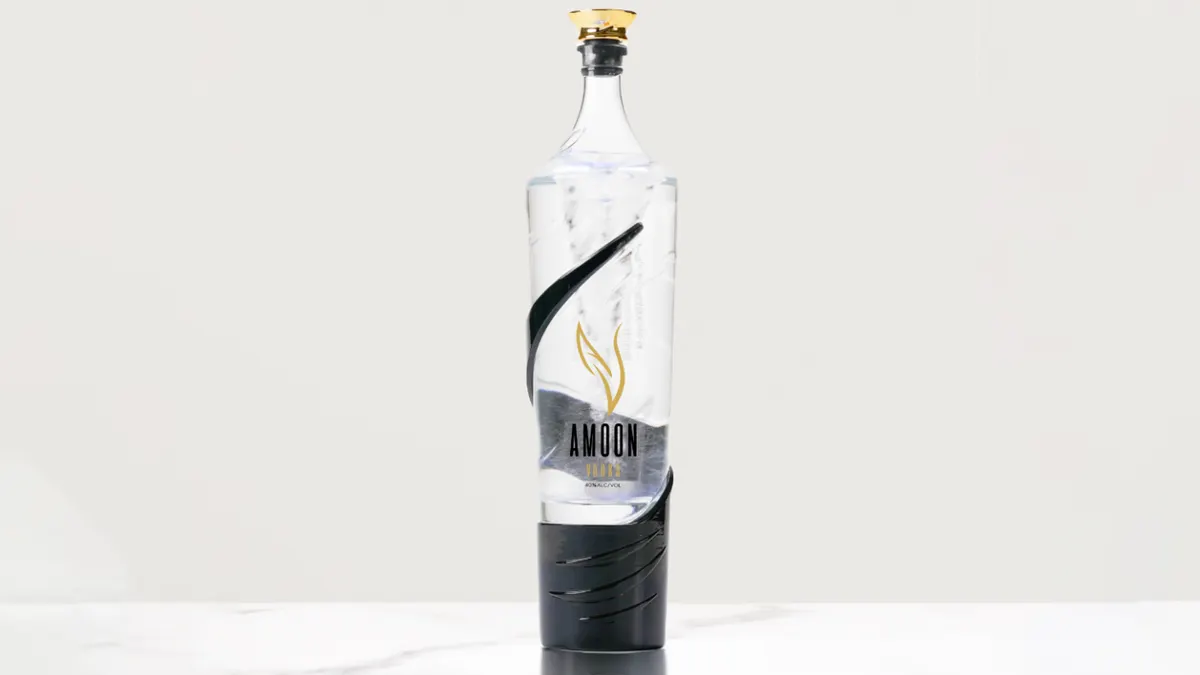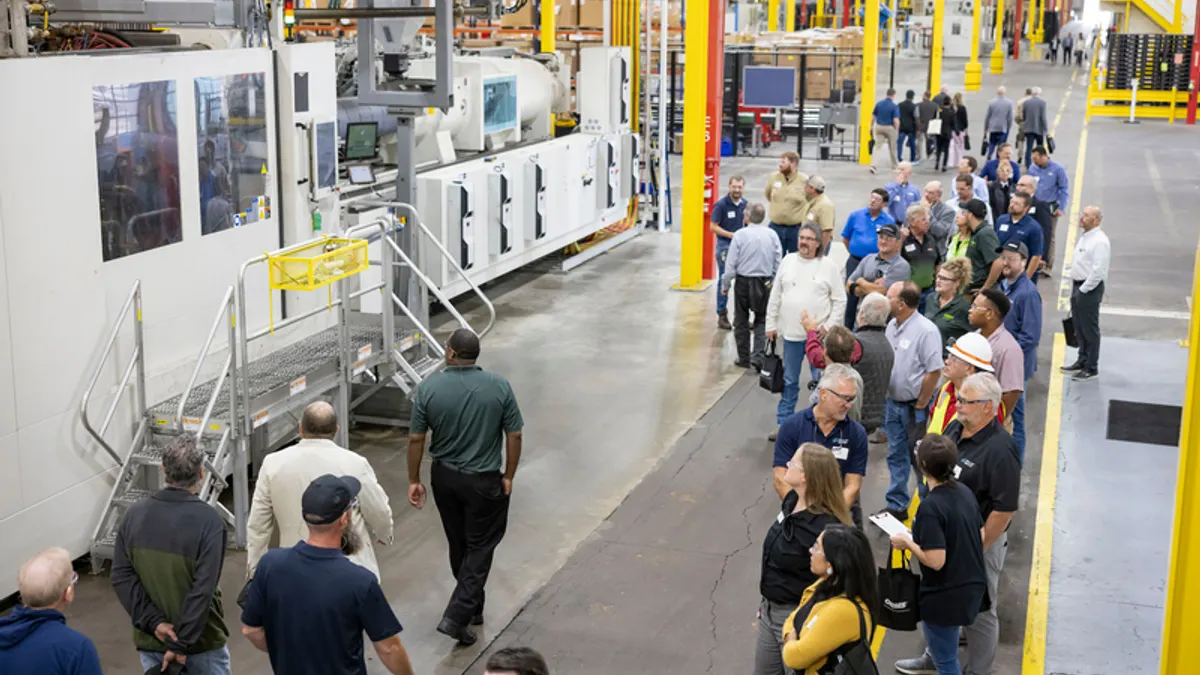CHICAGO — A year ago, a subsidiary of plastics recycler GDB International had just acquired the Myplas USA plastic film recycling facility in Rogers, Minnesota, that shut down suddenly mere months after opening in December 2023. GDB Circular has completed integrating that site into its plastic processing operations and now considers it a “flagship” facility, Managing Director Raj Bagaria said during a Thursday interview with Packaging Dive at the Paper and Plastics Recycling Conference in Chicago.
“The OEMs and the equipment that is there is foundational, but it is not the whole story,” Bagaria said. “It is our ability to execute in that market that makes any operation for GDB have the potential for success.”
The original 170,000-square-foot facility operated by Myplas USA, a subsidiary of South Africa-based plastics recycler Myplas, was designed to mechanically recycle and pelletize low-density and high-density polyethylene film. The Mbold consortium, a group of private companies and government entities aimed at accelerating solutions for food and agriculture challenges in Minnesota, supported and publicized the project.
Within about two months of opening, Myplas USA idled operations and furloughed employees. In April 2024, an eviction lawsuit was brought against the company for nearly $1.3 million in unpaid bills, and its board chair told Packaging Dive at the time that the facility “unexpectedly ran into financial challenges shortly after the launch.”
The facility initially received a $13 million joint equity investment from investors including food companies General Mills and Schwan’s Co., film manufacturer Charter Next Generation, Target, the Alliance to End Plastic Waste and Closed Loop Partners. Project investors engaged with GDB about the Rogers facility starting roughly 18 months ago, and the company closed its acquisition in September 2024.
GDB has grown both organically and through acquisitions, but this is the first deal in the company’s roughly 30-year history that has involved equity partners, Bagaria said. GDB is the majority owner and operator of the facility.
“Once our equity partners saw what we’re capable of, they decided to give [the Rogers facility] a second go,” Bagaria said. “They understood what we were, how we operated — the family business mentality.”
It’s not easy to purchase an asset considered a lemon, Bagaria said, “and we're really grateful to them in supporting us in our vision and journey to get this facility back online.”
Location, location, location
The original partners frequently touted the importance of bringing a film recycling operation to the Midwest, largely due to the amount of material available in the region and the lack of other local processing capabilities. The location is part of the reason GDB considered this an attractive acquisition.
GDB already had a “pretty decent foundation” in the Midwest, with a presence in Illinois, Minnesota and Ohio, Bagaria said. The company also had existing relationships with the OEMs whose equipment was in the Rogers plant.
“So we felt confident in our ability to build a team there and to revive that facility,” he said. “It was largely the vision of my father, Sunil Bagaria, to take that leap of faith.”
The original consortium behind the plant intended to source typical film formats including single-use plastic bags, food packaging, pallet wrap and shrink wrap. The Midwest also has niche sources such as agricultural film and boat wrap — the plastic film used to protect boats in storage during the offseason — that the facility also handles. Much of that heads to landfills, Bagaria said, noting work in Minnesota to collect and recycle it instead.
The state explicitly included boat wrap in its extended producer responsibility for packaging law that passed last year.
“I was engaged in the Minnesota boat wrap EPR. I spent a decent amount of time just sharing our views as to what we can do realistically as a plastic film recycler in the state of Minnesota,” Bagaria said. “It's tough to aggregate and sort and bring it to the right end use. So I think the EPR law will do a good deal in taking one specific film — boat wrap, which is uniquely a Midwest problem — and show that it is possible to attack the problem with the right tools.”
Forming a flagship facility
Although “we obviously know how the story ended,” Bagaria said he doesn’t have many specifics about how the Rogers facility operated under previous ownership or exactly what contributed to the quick shutdown. But he explained that GDB decided to roll the Rogers plant into a hub-and-spoke model rather than make it a standalone unit, which “is a big business difference” compared with competing plastic recycling operations.
“Rogers, Minnesota, is supported on the shoulders of all of GDB’s other facilities,” Bagaria said. “These can supply a pre-processed film bale that’s easier to run, that creates a higher quality product, that gives some legs to stand on in the first few years.”
Another operational characteristic that helps a GDB facility achieve flagship status is that leadership is hands-on, Bagaria said. “We like to be on the floor at all times, especially when the facility is in its infancy.”
GDB is not a hauler that collects film from residential or front- and back-of-store commercial sources; it procures the film from companies that collect it and then processes the material. Getting the right feedstock on the line is crucial, Bagaria said. “We live and die by feedstock.”
Ensuring that a plant produces high-quality resin with properties desirable to customers is a key part of designating a flagship facility, according to Bagaria. The Rogers plant gave the company a chance to expand its portfolio into two areas trending in the industry right now.
“This was an opportunity for us to really take a step toward downstream integration, especially for linear low-stretch PCR. We did not have linear low PCR in our portfolio prior to Rogers, and we did not have food grade,” Bagaria said. “This facility allowed us to do both in one shot.”
Plastic recyclers also are subject to factors beyond their operational control that can alter business dynamics, such as market challenges, regulatory changes and low demand from brands that are not procuring the amounts of postconsumer recycled content they targeted in their sustainability goals.
“Right now we are standing in front of a really industry-changing opportunity with EPR and minimum recycled content and customer demand — especially on the film side,” Bagaria said. “But for us to get there in 18 months is not a walk in the park. We’re competing in an environment with historically low virgin pricing and historically low demand for PCR — at least in the context of the past few years compared with the brand announcements.”
Therefore, GDB is encouraging its brand partners to up their PCR use sooner rather than later. Meanwhile, the company will “run a tight ship” and continue its work to produce quality PCR that is economical for both suppliers and customers, Bagaria said.
“Once the demand turns up from the brands, we’ll be ready to turn up alongside them,” he said. “We’ll get there.”


